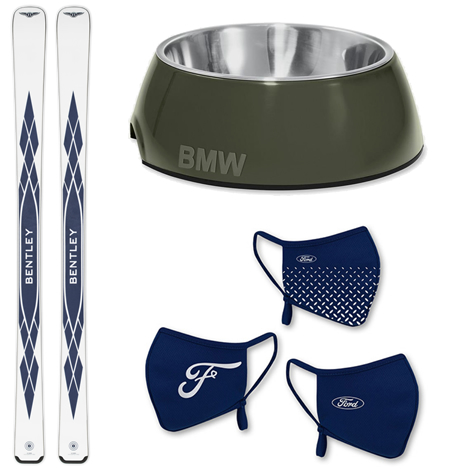Autos
Tip-top pocket rockets: BMW M2, BMW Z4
German automaker leads in rankings for user-friendly options
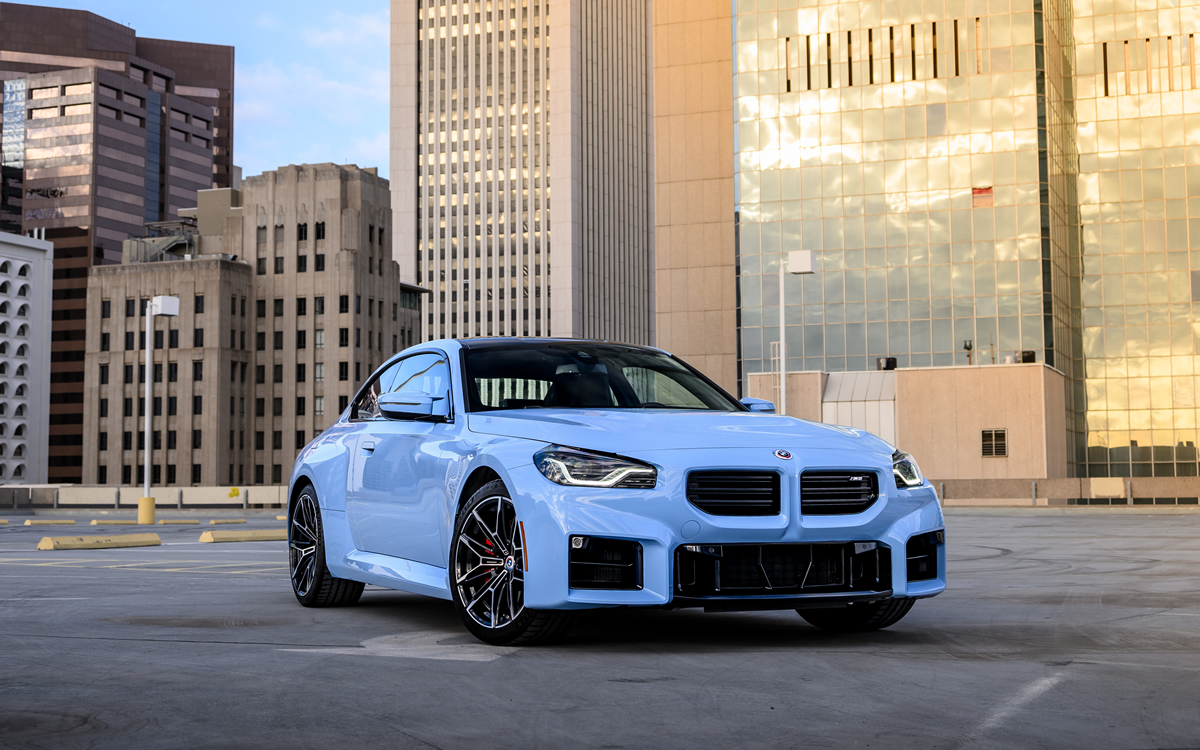
Sure, German cars are uber exciting, but Asian brands are much more reliable. Right? Well, not exactly.
This year, for the first time, BMW tops the list in what is considered the holy grail of product-quality resources: Consumer Reports. Along with improved reliability, BMW leads in the rankings for user-friendly options—including innovative infotainment systems.
To be sure, seven of the top 10 most-reliable vehicles are still made by Asian automakers.
But today’s BMW drivers can enjoy both style and substance, with rides that are fun, fast, furious—and now very dependable.
BMW M2 COUPE
$64,000
MPG: 16 city/24 highway
0 to 60 mph: 3.9 seconds
Cargo room: 13.8 cu. ft.
PROS: lively acceleration, taut handling, sexy exhaust growl
CONS: rigid front seats, tight backseat, hard-to-access seatbelts
IN A NUTSHELL: I have a love-hate relationship with two-door cars. They fail the test when it comes to ferrying lots of people or more than a few suitcases. And forget about cross-country trips, especially if you want to pull over and catch 40 winks by stretching out in any sort of rear cargo area. But it’s hard to resist the convenience of a coupe or convertible when scooching into tight parking spaces or weaving through congested traffic. And these rides can be a blast to drive. That’s the case with the BMW M2 super-coupe, a pocket rocket that comes standard with a 435-hp engine and six-speed manual transmission. Expect automotive purists to forgo the optional eight-speed automatic, though it is a tad faster.
The feisty styling boasts flared fenders, muscular side panels and an arousing rear spoiler. As my husband Robert said, “This car is ‘sex on wheels.’ ” Yes, indeed.
Of all the BMW high-performance M cars, the M2 is the smallest and least expensive. Yet it’s loaded with the latest bells and whistles: sport-tuned suspension, track-oriented tires, side-impact airbags, knee airbags, Harman Kardon surround-sound stereo, 12.3-inch digital gauge display and an even-larger 14.9-inch infotainment touchscreen. This second-generation M2 is also longer and wider than before, which adds more leg and elbow room inside.
My test car came with the weight-saving carbon-fiber package. This included bucket seats with rigid thigh bolsters, as well as a quirky hard protrusion that stuck up awkwardly between my legs. Intended to keep you seated firmly in place when swooshing in and out of twisty curves, the intrusive seat design can sometimes smoosh your nether regions. In other words, there’s a reason these seats are called “ball busters.”
BMW Z4 ROADSTER
$55,000
MPG: 25 city/33 highway
0 to 60 mph: 5.2 seconds
Cargo room: 9.9 cu. ft.
PROS: wicked fast, easy to drive, cushy cabin
CONS: low ground clearance, no second row, skimpy storage
IN A NUTSHELL: Built on the same platform as the less-expensive but also less-luxurious Toyota Supra coupe, the BMW Z4 convertible is more of a comfortable cruiser than cheeky racecar. Two fine engine choices are available, though neither propels the Z4 as fast as the Supra or BMW M2 coupes. Still, handling and braking are splendid. Most important, my tush appreciated the more traditional seating in the Z4 compared with those butt-blasting seats in the M2.
As with all BMWs, styling on this two-seater is dramatically sculpted. My only complaint was with the doors, which are so darn long you need to lean over and reach into another county to close them.
The high-quality cabin is surprisingly spacious, with plenty of headroom, even with the top up. But storage cubbies are few and far between. Luckily, the trunk offers decent stowage, thanks to the power-operated top that takes up no cargo space when lowered. And despite having a fabric top instead of a thick metal one, there’s very little road noise.
As with the M2, the Z4 is actually a lot of car for the money. Pricey competitors to the Z4 include the $101,000 Porsche Boxster S and $110,000 Mercedes SL-Class.
While crossovers and other SUVs may rule most showrooms today, these two rousing, reliable and relatively affordable two-door rides offer plenty of temptation.
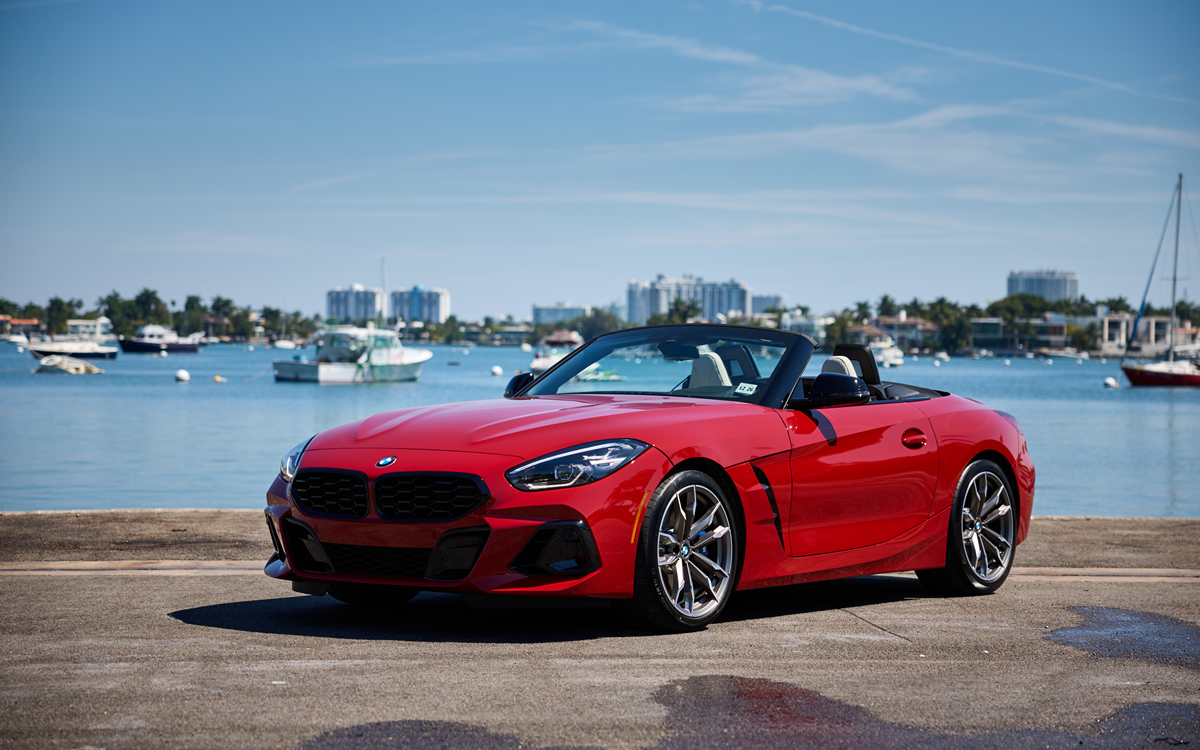

After a brief hiatus that started in late 2023, the Chevy Bolt—once a practical wallflower in the EV world—arrives back in showrooms in early 2026. It’s now sleeker, sassier, and less expensive than ever. And why not? Saving the planet should be affordable — and look good on Instagram.
CHEVY BOLT
$29,000
Range: 255 miles
0 to 60 mph: 7.5 seconds
Cargo space: 16.2 cu. ft.
Pros: Shapelier styling. Faster charging. Wallet-friendly price.
Cons: No speed demon. No AWD option. Modest towing capability.
If the previous Chevy Bolt was like a dependable friend who didn’t exactly turn heads, the new version has had a queer awakening. Still practical? Absolutely. Still efficient? You bet. But the exterior now boasts a sharper, wider stance, with slimmer headlights and punchier details that scream confidence instead of compromise.
Charging speed—which was anemic before—is significantly faster: roughly 100 miles in just 10 minutes at a fast-charging station. If you’re on a longer road trip and need to reach up to 80% battery capacity, it takes just 26 minutes—which is less than half the time of the previous model.
Range sits around 255 miles, so you’ll have no problem making it from your downtown apartment to that weekend cabin getaway—or your ex’s new city, if you’re feeling chaotic.
Regenerative braking is also improved, recapturing more energy for better efficiency and the ability for seamless one-pedal driving. In fact, lift your foot off the pedal and you can now come to a complete stop without touching the brakes.
As for speed, there’s now 210 horsepower—perfect for zipping through traffic (and faster than the Bolt’s archnemesis: the Nissan Leaf).
Overall, the ride is composed and confident—smooth over bumps, whisper-quiet, and surprisingly fun. No, this is not a performance diva, but it’s got lowkey swagger.
Inside, the Bolt is all grown up: cozy, modern and uncluttered, with soft-touch materials and ambient lighting that can match your mood. The cabin feels designed for people who appreciate good design—and good lighting for selfies.
There’s also enough tech to impress gadget-loving friends without being overwhelming. A massive, curved touchscreen runs Google Built-In, so your Maps, Assistant and playlists are always ready to go. Apple CarPlay and Android Auto are still here, and the interface feels logical, polished and just a touch playful.
And the suite of safety features is impressive: automatic braking, lane-keeping assist, blind-spot monitor, 360-degree camera, parking assist—it’s all here. But the crown jewel is Super Cruise, GM’s hands-free driving system that can take over on thousands of miles of highways. Forget route planning or battery-range concerns, this high-tech system does it all for you—including automatic lane changes on compatible roads.
Headroom and legroom are more than decent, especially for front-seat passengers. But for serious shopping mavens, rear cargo capacity is basically average. Luckily, the Bolt’s stowage quickly balloons to three times the size with the rear seats folded. (CityCenter, her I come!)
If the first Bolt seemed like that sweet environmentalist who handed out reusable straws, this one’s their supercharged offspring—still saving the planet, but now with a jawline and a Spotify playlist that slaps. It feels like an EV that makes sustainability something to celebrate, not tolerate.
To me, you could say the Bolt didn’t just come back — it came out, fully charged and ready to shine.

The BMW X4 and its spicy sibling, the X4 M, are like that annoying A-list couple: One’s got the sleek, stylish look that turns heads, and the other is the high-energy dancer in six-inch heels who just won’t leave the stage. Both deliver, but in different flavors.
BMW X4
$57,000
MPG: 21 city/27 highway
0 to 60 mph: 6.2 seconds
Cargo space: 18.5 cu. ft.
PROS: Effortless acceleration. Easy handling. Elegant looks.
CONS: Eensy-weensy side-door storage. Vexing electronics.
The BMW X4 compact SUV is all about presence—a sloping roofline screams “crossover coupe,” while the refreshed front fascia exudes enough attitude to feel modern without overdoing it.
Inside, the X4 is full glam. Cabin materials lean upscale, with form-fitting, multi-adjustable seats that are heavenly. And optional upholstery colors go beyond basic black. Think mocha brown, oyster beige and even a bold red if you’re feeling extra smart.
A curved display sweeps across the dash like an opera diva, with a nice mix of touchscreen and dial controls. But while some drivers may swoon over the nav system’s adaptive map mode—which enlarges the view on the screen automatically every time you approach a turn, intersection or merge lane—it took some doing for me reset the monitor to the old-school static view I prefer.
Performance-wise, the base model—the xDrive30i—starts with a turbocharged four-cylinder (good for 248 horsepower). But the real sweet spot is the six-cylinder xDrive40i, which pumps out a robust 382 horses. This is not a sports car, but it sure is playful—like a friend who insists on karaoke after midnight and somehow nails every note.
Handling is sharp for a crossover, thanks to BMW’s all-wheel drive and well-tuned suspension. But while the sharply angled roof sure is sexy, it also means limited rear headroom and cargo space. Luckily, the stowage expands to almost three times the size by folding down the backseats.
Of course, buyers aren’t choosing the X4 because it’s an overt hauler. They want intriguing looks and, well, an ego boost. I found this Bimmer to be daring enough for date night, practical enough for groceries and fun enough to take on twisty back roads.
BMW X4 M
$81,000
MPG: 15 city/20 highway
0 to 60 mph: 3.9 seconds
Cargo space: 18.5 cu. ft.
PROS: Exhilarating power. Exotic feel. Elegant lines.
CONS: Anemic fuel economy. Excessive sticker price.
If the BMW X4 is like your chic brunch buddy, then the high-performance X4 M is the club friend who orders tequila shots for everyone and convinces the DJ to play Beyoncé’s “Renaissance” front to back. This thing is drama—in the best way.
Under the hood, the X4 M packs BMW’s beloved 3.0-liter twin-turbo inline-six, tuned for 473 horsepower. In the Competition trim level, you get a staggering 500 horsepower and can fly from 0 to 60 mph in as little as 3.2 seconds. (Yes, that’s quicker than some exotic race cars. But for me, driving either one of these bad boys was like voguing down a runway in broad daylight.)
The styling cues crank things up, too: aggressive air intakes, quad exhaust tips, performance wheels and a slightly angry stance. The X4 M doesn’t just look sporty, it seems to be challenging every vehicle out there to a dual. Inside, the M-specific touches—sport seats, carbon-fiber accents and customizable drive modes—reminded me that this isn’t just another pretty face.
On the road, this BMW is absolutely thrilling. Steering is precise, grip is endless and the engine’s growl feels more Broadway belter than coffeehouse crooner. Sure, the ride is firm—not exactly built for Sunday yoga Zen class—but that’s part of the appeal. Anyone shopping this car wants intensity.
Alas, practicality does take a hit. As with the regular BMW X4, rear cargo area is tight. And eco-conscious drivers will be put off by the low fuel economy here. But let’s be real: no one buys an X4 M for Costco runs. They buy it because of the over-the-top performance and panache—and just enough utility to make sense.
IOW, the X4 M is for extroverts, people who thrive on making an entrance. If the standard X4 is your sophisticated weekday outfit, the X4 M is your sequined Saturday night.
Autos
Eco-friendly oldies but goodies: Prius, Leaf
Toyota, Nissan still producing these sleeker, smarter legends
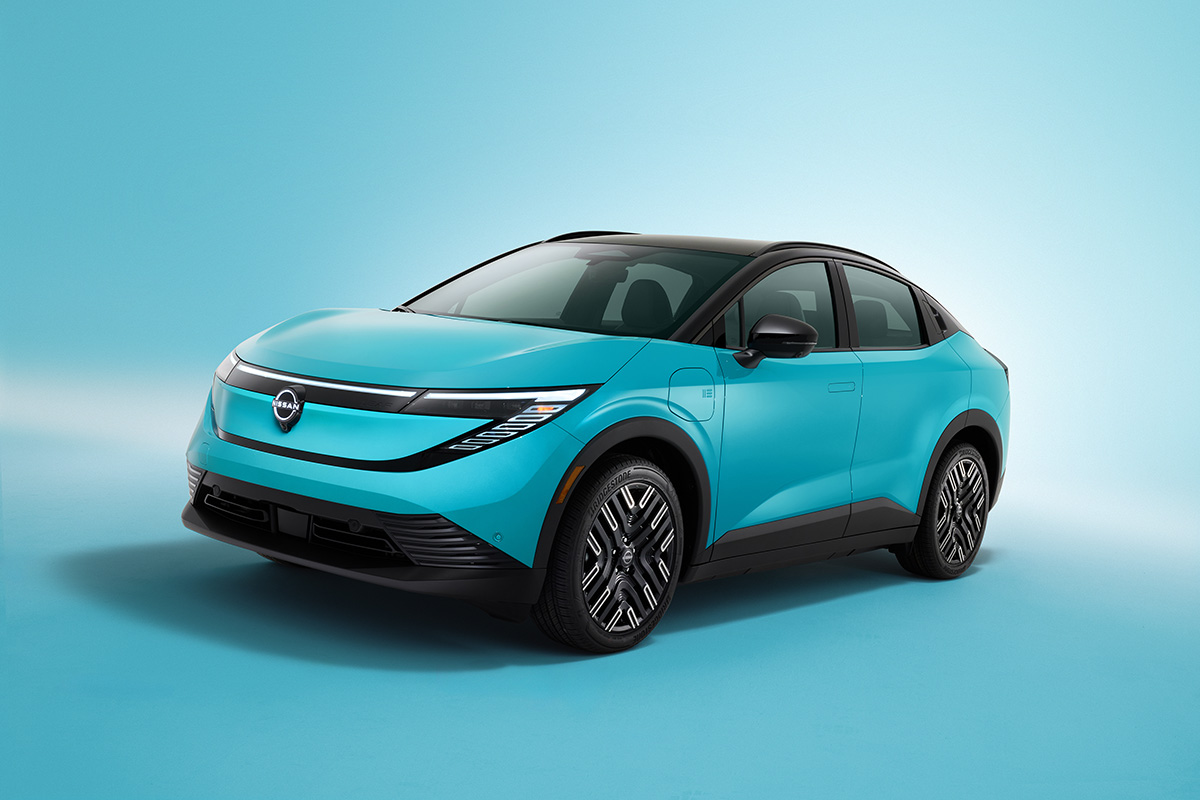
Oversized SUVs dominate parking lots like they’re the headliners at suburban music festivals, but there’s real artistry on the road with two compact eco-car legends: the Nissan Leaf and Toyota Prius. Both are now sleeker, smarter and much more fun than their early-2000s selves.
Think of them as queer kickball teammates: The Leaf is the quiet nerd who’s secretly hilarious, while the Prius is the glam social butterfly who somehow knows everyone.
NISSAN LEAF
$30,000
Range: 149 to 215 miles
0 to 60 mph: 7.4 seconds
Cargo space: 23.6 cu. ft.
PROS: Cute. Maneuvers easily. Feels spacious inside.
CONS: Limited in range, charging options and cubbies.
IN A NUTSHELL: Ditching its bug-eyed looks, the latest Nissan Leaf flaunts a trendier style—not too edgy, but not bland either. You can dress this electric vehicle up in colors like Deep Blue Pearl or Scarlet Ember, making it flamboyant enough for a Pride parade. Inside, the design is practical but not frumpy: enviro-friendly fabrics, a logical layout for gauges and an interior that feels airy.
The standard Leaf S comes with a 147-horsepower electric motor and 149-mile range, while the Leaf SV Plus offers more oomph: a 214-horsepower motor and 215-mile range. Either ride is powerful enough for daily commuting or shortish weekend getaways. But while you can “fast charge” the battery pack to 80% in about 40 minutes—enough time to grab a latte and spill some gossip—the rather dated port mechanism needs an adapter for use at many of today’s charging stations.
Still, this EV feels nimble and ready to play in tight spaces. Another plus: The regenerative braking—with easygoing one-pedal driving—makes it feel like you are gently teleporting to destinations.
While a bevy of new EVs offer more range, power and features, it’s the Leaf’s low MSRP that is such a draw. This means the list of base-model amenities is solid but not overflowing: steel wheels with plastic covers, automatic headlights, remote entry and smartphone integration.
Step up to the Leaf SV Plus for larger wheels, power driver’s seat, nav system and better stereo. An app also lets you remotely cool or heat the cabin, as well as check for battery-charging time, range and even nearby stations—because nothing kills a vibe like running low on juice mid-trip.
For me, the Leaf is a low-drama, high-reliability EV. Not as flashy as some newcomers, but still able to hit all its marks.
TOYOTA PRIUS
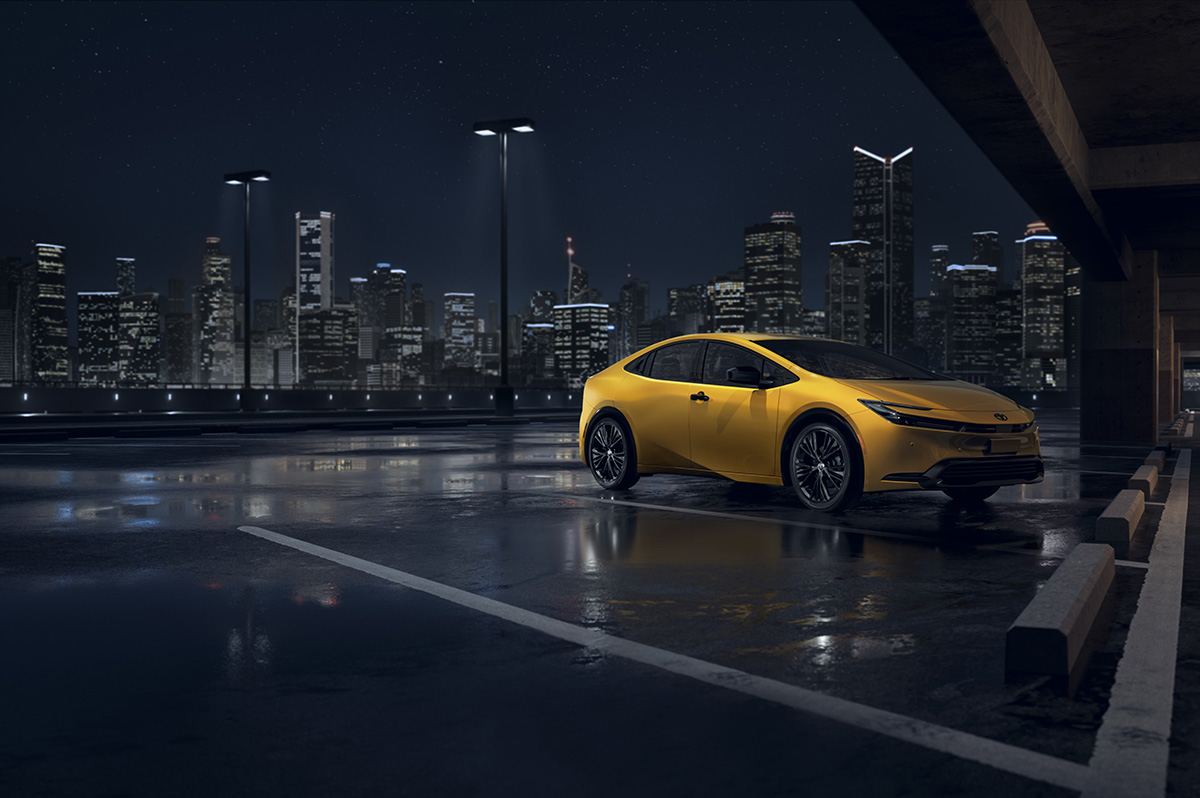
$30,000
Mpg: 57city/56 highway
0 to 60 mph: 7.1 seconds
Cargo space: 23.8 cu. ft.
PROS: Steller fuel economy. Quicker and sexier now.
CONS: Reduced rear headroom. Bit noisy at times.
IN A NUTSHELL: Remember when the Toyota Prius was the butt of car jokes? Those days are over. The latest version is a full-on glow-up story—new look, new attitude, same eco-friendly heart. If the old Prius was sensible sandals, this one is a designer sneaker (or Prada heels, even) that still supports your arch.
Exterior colors are quite outré, such as Wind Chill Pearl, Supersonic Red and Cutting Edge—a metallic silver with a sparkling finish that changes depending on the lighting. Yep, bling!
Under the hood, the hybrid system pairs a 2.0-liter engine with two electric motors for a combined 194 horsepower (or 220 horsepower in the all-wheel-drive Prius Prime plug-in, which can go up to 44 miles on battery power alone). This Prius is quicker than any previous model and still delivers incredible fuel economy. Oh, and braking is better than ever, too.
Steering feels more responsive, the ride is composed and the lower stance means this hybrid corners with actual confidence. You won’t confuse it for a sports car, but you might just take the long way home.
Inside, the cabin is modern and minimalist, with an emphasis on clean lines and quality finishes. The digital gauge display is now front and center (finally!), and the infotainment system is quick and easy to use. Smartphone integration and a full suite of driver-assist features are standard. There’s enough room for four adults to ride comfortably, and the hatchback layout means it can swallow IKEA flat-packs without complaint.
The Prius has gone from quirky wallflower to confident main character. Efficient, practical, and unexpectedly attractive—it’s like Cinderella, who finally realized she was gorgeous all along.
-

 U.S. Supreme Court3 days ago
U.S. Supreme Court3 days agoSupreme Court rejects Kim Davis’s effort to overturn landmark marriage ruling
-

 District of Columbia3 days ago
District of Columbia3 days agoCapital Pride files anti-stalking complaint against local LGBTQ activist
-

 Movies5 days ago
Movies5 days agoSuperb direction, performances create a ‘Day’ to remember
-

 Theater4 days ago
Theater4 days agoAstounding ‘LIZZIE’ builds on legendary axe murder tale



